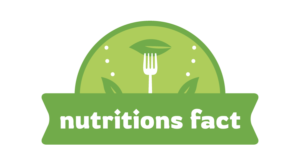The diamond from the collection of Lily Arkwright industry has long been associated with issues of ethical sourcing, environmental impact, and human rights violations. As consumer awareness grows, more individuals seek assurance that the diamonds they purchase are sourced responsibly. This has led to the increasing importance of certifications in ethical diamond buying. Certifications provide a standardized way for buyers to verify that their diamonds adhere to ethical, environmental, and quality standards, ensuring that their purchase does not contribute to unethical practices such as child labor, environmental degradation, or conflict funding.
One of the most well-known certifications in the diamond industry is the Kimberley Process Certification Scheme (KPCS). Established in 2003, the Kimberley Process aims to prevent the trade of conflict diamonds, which are used to finance armed conflicts and human rights abuses. The certification ensures that diamonds are mined and traded through legitimate sources. However, despite its intentions, the Kimberley Process has faced criticism for its limitations, such as the lack of enforcement mechanisms and loopholes that allow conflict diamonds to enter the supply chain. While it serves as a foundational step in ethical diamond trading, consumers and jewelers must look beyond this certification for a more comprehensive approach to ethical sourcing.
Another essential certification is the Responsible Jewellery Council (RJC) certification. The RJC is an international non-profit organization that sets standards for responsible business practices in the jewelry industry. RJC certification covers various aspects of sustainability, including labor rights, environmental impact, and ethical sourcing. Companies that receive this certification undergo rigorous audits and must comply with strict guidelines to maintain their status. This provides consumers with greater confidence that the diamonds they are purchasing are not only conflict-free but also sourced with respect for workers and the environment.
The Gemological Institute of America (GIA) and other gemological laboratories, such as the American Gem Society (AGS) and the International Gemological Institute (IGI), also play a significant role in diamond certification. While these organizations primarily focus on the quality and grading of diamonds, they provide transparency in the diamond supply chain. A GIA certification, for example, details a diamond’s cut, color, clarity, and carat weight, ensuring that buyers receive an accurate assessment of their purchase. This transparency indirectly supports ethical buying, as consumers are less likely to be misled about a diamond’s origin or quality.
Beyond traditional certification schemes, new blockchain-based initiatives are emerging to enhance traceability in the diamond industry. Companies like Everledger and De Beers’ Tracr initiative use blockchain technology to create immutable digital records of a diamond’s journey from mine to market. This ensures that consumers can trace the entire history of a diamond, verifying its ethical sourcing. Such innovations add an extra layer of security, reducing the risk of unethical diamonds entering the market.
Lab-grown diamonds are another ethical alternative that often comes with their own certifications. Organizations like the GIA and IGI now provide certifications for lab-created diamonds, verifying their authenticity and quality. Lab-grown diamonds eliminate many ethical concerns associated with traditional mining, such as environmental damage and exploitative labor practices. For consumers who prioritize ethical sourcing, choosing certified lab-grown diamonds can be an excellent option.
Despite the availability of certifications, consumers must remain vigilant and informed. Not all certifications are created equal, and some may lack the stringent requirements necessary to ensure true ethical sourcing. It is crucial for buyers to research the different certifications available and understand their scope and limitations. Additionally, working with reputable jewelers who prioritize transparency and ethical sourcing can further enhance confidence in diamond purchases.
In conclusion, certifications play a vital role in ethical diamond buying by providing a standardized way to verify a diamond’s origins, quality, and ethical impact. While the Kimberley Process, RJC certification, and gemological laboratory certifications offer important safeguards, newer innovations like blockchain technology and lab-grown diamond certifications are further strengthening ethical practices in the industry. As consumer demand for ethically sourced diamonds continues to grow, the role of certifications will become even more significant in promoting sustainability.

